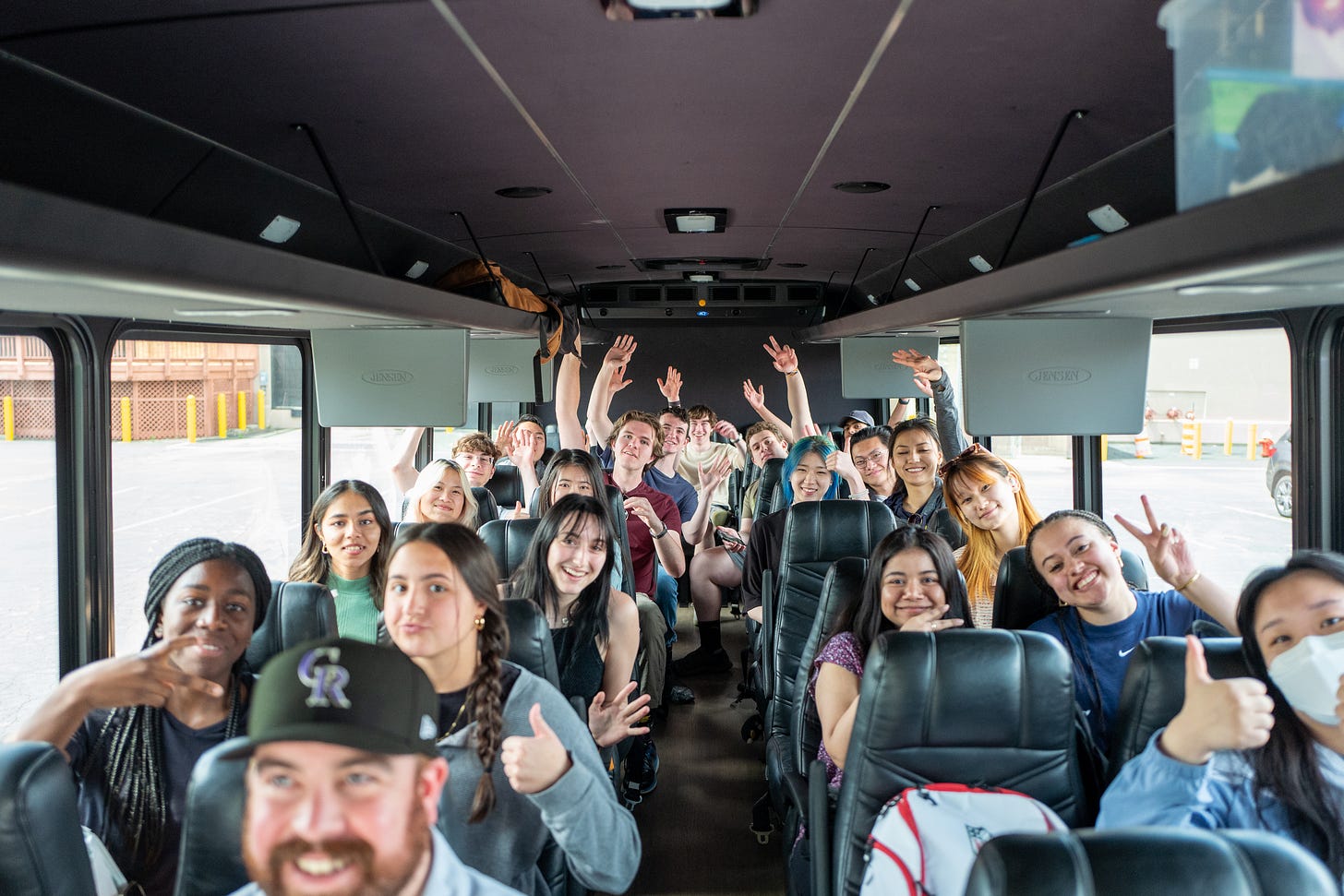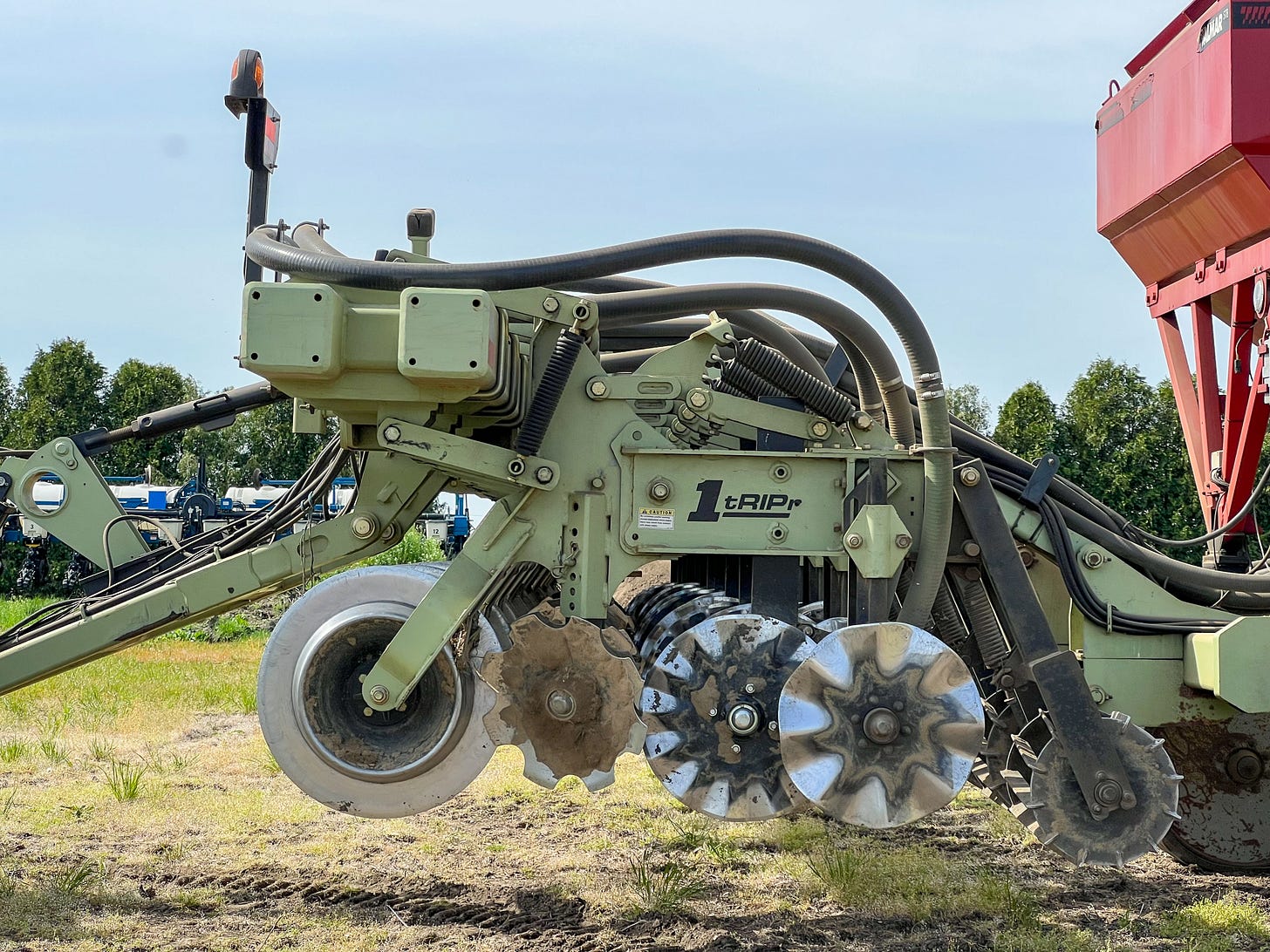Yesterday we took the first of four field trips during our Cities Intensive semester to check out water in and around Toledo, Ohio. Dive in below the break.
💬 Hello! This is the newsletter of the Urban Technology program at University of Michigan, in which we explore the ways that technology can be harnessed to nurture and improve urban life. If you’re new here, try this 90 second video introduction to our degree program.
🚰 Urban Technology on the Farm?
Landlocked cities would be green with envy over the access to water that Toledo has, except for the fact that the water of Lake Erie is literally green already. Lake Erie has the unenviable condition of being the most polluted of the Great Lakes, and it has been that way since the middle of the last century thanks to the heavy industry that powered the economies of Ohio and Michigan. But hey, at least Lake Erie hasn't caught fire like the Cuyahoga River!
Here’s an aerial view of the green lake. Spoiler alert: lakes are not supposed to look like this.

The culprit caught emerald-handed is a microscopic cyanobacteria called Microcystis aeruginosa. This little thing looks unthreatening but is toxic to humans, which is a problem when it makes its home in Toledo’s drinking water.
Even though pollution from industry has been significantly curtailed thanks to efforts like the EPA (and globalization, but we’ll skip that for now), another source remains problematic: agriculture. In 2014 residents in the Toledo area woke up to discover that their drinking water was unsafe thanks to runoff from the Maumee River watershed flowing into the lake and carrying rich quantities of phosphorus with it. Phys.org has a great long read on the topic:
Greater rainfall and more powerful storms are eroding some of the richest soils in the United States and, in doing so, washing bloom-inducing fertilizers from farm fields into Lake Erie. More frequent torrential downpours are also overpowering antiquated sewer systems at times, releasing a profusion of raw sewage into waterways, further polluting and degrading water quality…
Billions of dollars have been spent monitoring Lake Erie's water quality, overhauling drinking water treatment and reducing sewage outflows. But the biggest contributor to these blooms—agricultural runoff, which is responsible for up to 89% of the phosphorus flowing into Lake Erie—remains largely unregulated.
Phil D’Anieri, who teaches our Anatomy of a City course, talks about the linkages between natural systems, built systems, and human systems. The challenges of water in Toledo are at the intersection of all three. In Phil’s words:
Any urban space—a small town, a big city, a sprawling metropolitan area—is in some ways just the collection of systems that make it work. If you can understand those systems—where they are, what they do, how they connect to one another, and thus how they shape everyday urban life—then you have considerable leverage to make positive change in that place.
This is a challenge that spans natural systems from the regional scale of the Maumee watershed and Lake Erie down to the microscopic lifecycle of cyanobacteria. It involves built systems like the communities in the region and their water infrastructure and farming practices. And human systems are inescapable: politics, business, human nature, and history. As a whole, Toledo’s water challenges are pretty easy to understand, yet complex to unravel.
We employed one of the most powerful tools we have to help us make sense of the world: a roadtrip!
First stop: Stewardship Farms, led by the Isley family in Palmyra, Michigan, which is a sixth-generation farming operation that grows soy and corn.
One of the themes we learned about was farming with greater precision. Equipment like the strip-till seen below minimizes the amount of soil that gets disturbed when planting. GPS and continuous monitoring of the soil allow the tractor to distribute seed and fertilizer according to precise “prescriptions” refined by the farmers. The team working the land at Stewardship Farms are incredibly thoughtful about each step of their work, but they’re also constrained by the nature of—well—nature! Jake Isley, one of our hosts, described the work as “moving at a slow pace. Once a year you have a chance to test your work [with the crop]. Technology moves fast, but we can only move at the speed of seasons.”
No matter how precise the tracking, how realtime the data, there’s little that can be done to speed up natural cycles of growth, harvest, and planting.
Cover crops like the rye grass help the soil accept and retain water, which reduces runoff. We found discarded corncobs and other organic matter as well. But only some 10% of farms in the area (including Stewardship) use cover crops due to a confluence of tradition and cost. Farmers are innovative because they have to be, as Jake described, but family farms are not typically the type of operation that has a wide margin for experimentation. Small mistakes can be unrecoverable.
After thanking the Isley family, we met up with Toledo Mayor Wade Kapszukiewicz for a lunch of political economy and falafel, washed down with award-winning tap water thanks a billion dollars of infrastructure investment.
He explained the city’s investments in water treatment ($0.5 billion) and wastewater handling (another $0.5 billion) to reduce and mitigate the impact of algae blooms. Even though the threat against Toledo’s drinking water is regional, these are costs that fall on city residents because their only other choice is to not have drinking water, which puts extra pressure on the least secure members of society.
Residents of Toledo are comparatively lucky. When Flint, MI suffered catastrophic changes to their water system by external managers, there was no $1B of bond money to patch things up quickly.
As Mayor Kapszukiewicz outlined, regulation to force more actors to follow farming practices like those of the Isley family and groups like Water Quality Farming is a significant option that has been politically untenable to date. In theory, human systems should be more agile than natural ones, but that theory does not account for polarization.
And: did you really think we would spend all this time focused on water and not get on a boat?
So where was the urban technology on this trip? The closer one looks, the harder it is to draw urban boundaries. Farmers that use precision data to improve their practices and minimize the impact on their urban neighbors; lake water that’s monitored for pollution by sensors of multiple varieties; decision-making systems that are too polarized and in need of better ways to reach self-preserving consensus between urban and rural citizens alike. Infrastructure spending respects county lines, but watersheds, runoff, and algal blooms do not.
Urban technology doesn’t have to be gizmos, though we met some interesting ones yesterday—hello, self-steering tractor! What is the infrastructure needed to thrive in the 21st century? What are the interfaces that will empower individuals to make better decisions about their environmental impacts? What are the forums that will foster collective action on the same? How can hardware, software, and media create better feedback loops so that more people understand that even the most urban of systems still move at the speed of seasons?
That’s all for Toledo. Next up: Chicago, to study mobility!
These weeks: (yes, we skipped links this time). Job talks, Chicago planning, document making, curriculum wrangling, planning to plan, and a lovely meeting with our advisory board. We’re closing in on newsletter 700 subscribers, which is very exciting. If you enjoy this, bop the button below to share with a friend.🏃












